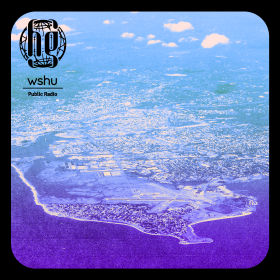
Hosted and produced by J.D. Allen and Sabrina Garone.

Season 2: Climate change is the greatest persistent threat to the way of life in coastal cities. Higher Ground puts the microphone in the hands of a classroom of student scientists as they come to grips with the global crisis in Connecticut’s largest city. The students think they know something about global warming, but, together from the classroom to the outdoors, we will brainstorm changes to improve their community.
Support from the Joan Ganz Cooney Center at Sesame Workshop and the Corporation for Public Broadcasting as part of the Next Gen Public Media Accelerator program.
This season was produced in partnership with the Discovery Science Center and Planetarium.
-
We are setting up home base in Bridgeport. It's among the youngest places in an aging Connecticut. Young people here — and everywhere — want climate action.
-
We are teaming up with an after-school program for Bridgeport middle schoolers to explore how students perceive the global climate crisis in their neighborhoods.
-
We are headed outdoors to make observations — to see Bridgeport through the eyes of its youngest residents. The eighth-grade student scientists will record what they find, helping them better identify with the global climate crisis in their neighborhoods.
-
The student scientists are still learning how to identify and use reliable information about climate change. These teens are trying to figure out what their role can be in addressing this seemingly overwhelming problem.
-
The student scientists identify air pollution as an avoidable sign of climate change in their neighborhoods. So, we start to bring their research and questions to Bridgeport's policymakers to see how the ideas of middle school students can help protect their city.
-
The quality of the water — either what falls from the sky when it rains, floods from the coast when it storms, or bubbles up the tap to drink — is on the minds of our student scientists. So, they build an innovative prototype to reuse water.
-
Our student scientists recognize there is only so much that people can do to protect water quality in their harbors. When it rains, it pours into their streets, flooding into city sewers. They are curious about what flows downstream into their neighborhoods.
-
The idea to give everyone an acorn could change the landscape of a city. The student scientists know not all of the seeds would succeed, but they see the solution as way to make Bridgeport more resilient — and beautiful.
-
Our student scientists didn't whine about how adults were responding to climate decisions that affect their future. We can find innovative ways to adapt to changes in our environment when we listen to young people.












